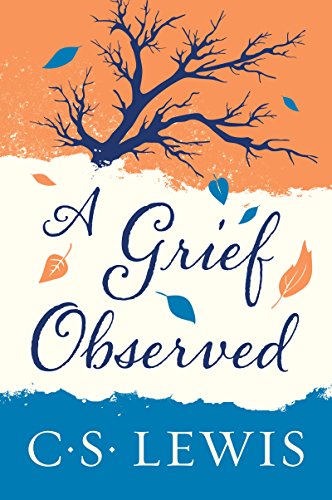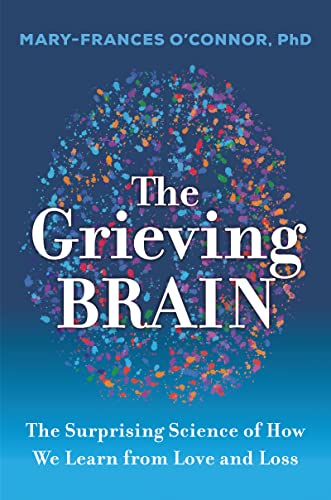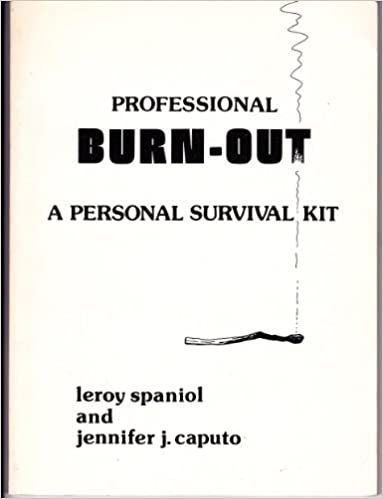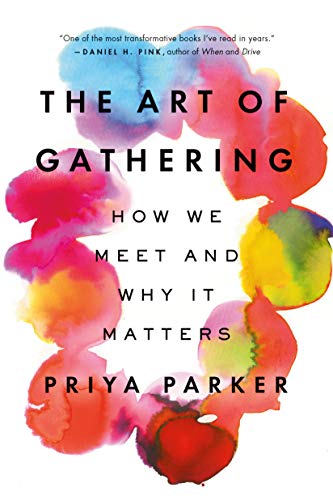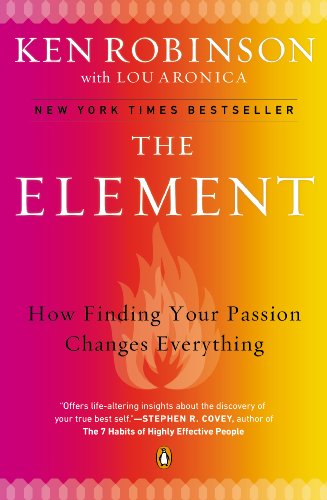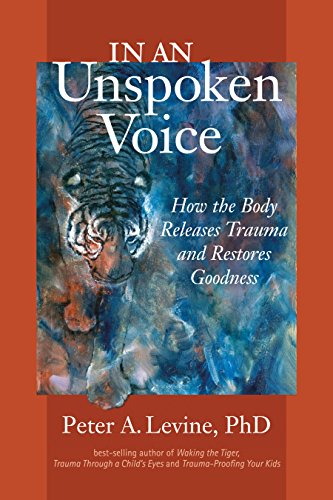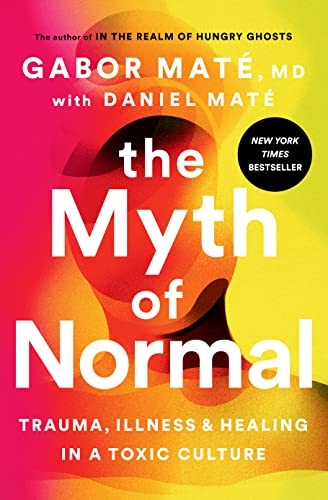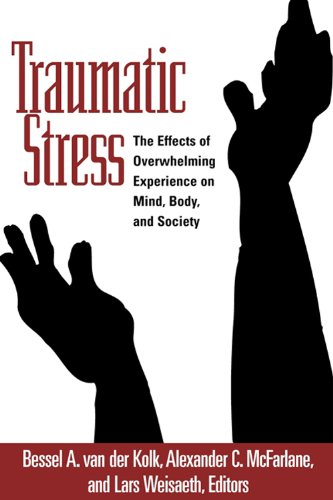
Book Review-Traumatic Stress: The Effects of Overwhelming Experience on Mind, Body, and Society
Traumatic experiences have the capacity to change us at a genetic level. We can be so burdened by our traumas that we’re unable to appreciate the gift of the present. Traumatic Stress: The Effects of Overwhelming Experience on Mind, Body, and Society is a journey into what trauma is, how it impacts us, and what we can do about it. One of the editors, Bessel van Der Kolk, is the author of The Body Keeps the Score and a friend of Gabor Mate, who wrote The Myth of Normal. In short, it’s edited by people with huge respect in the trauma space.
Legitimate PTSD
Labeling is a problematic space for psychology. On the one hand, experiments have shown that labels can have a negative impact on our outcomes. (See The Psychology of Hope and A Class Divided for more.) However, on the other hand, a label gives us something to call our struggles and creates an opportunity to come together around a common challenge. (See The Deep Water of Affinity Groups for more.) Traumatic circumstances that have debilitating consequences have had several names over the years, but it wasn’t until DSM-III in 1980 when the post-traumatic stress disorder (PTSD) moniker got its foothold. Now for many it serves as a way for people to identify and understand what’s happening to them.
This comes with a risk. Despite the idea of post-traumatic growth (PTG), some people believe that PTSD is a life sentence. (See Transformed by Trauma for more on PTG.) People are told that the flashbacks that interrupt their world today may become less frequent, but they’ll always be subject to a relapse and therefore can never be totally healed. This reframes them as broken and, in some ways, a perpetual victim of their trauma. This isn’t helpful.
It’s true that there is always the chance the trauma will come back up again, but recovery isn’t about resolving the symptoms forever. It’s about resolving them most of the time and providing better coping skills when they do intrude again.
The Meaning of Trauma
In my review of Trauma and Recovery, I explain that trauma is our inability to process what we’ve seen or done. This is echoed here – with the twist that the magnitude of the problem is bigger over time because of the reinforcement that happens. A memory intrudes, it’s disruptive, and you take “evasive action” alongside the fear that the situation will overwhelm you; as a result, the memories are reinforced and can become even more scary and overwhelming the next time.
Because the body becomes biologically aroused for something that is no longer a threat, we attempt to disconnect our bodily sensations with the rest of our world – treating them as hostile and unreliable witnesses to reality. However, this disconnection process leaves us ill-equipped to sense that an episode is on the horizon or is coming. It also provides us with insufficient warning to consider our response rather than just react.
Richard Lazarus in Emotion and Adaptation explains that there is a gap between stimulus and response. We can use it to thoughtfully respond, or we can ignore the gap and simply react. The goal in teaching people how to cope with greater degrees of trauma without becoming traumatized is helping people develop the space between stimulus and response.
Invulnerability
Anyone who has met a boy in their early twenties has met someone invincible and invulnerable. At least that’s the way that many see themselves at times. They can do amazing feats that others cannot. Surely, they cannot be harmed. They look at their parents with their aches and pains and wonder without knowing how they could have ended up that way. (For more on our delusions of grandeur, see How We Know What Isn’t So.)
Trauma has a way of piercing the illusion of invulnerability, whether it’s for you personally or just someone you know. The trauma signals to some part of you that you are vulnerable, you can get hurt, and that’s world-altering. We build our world based on our perceptions and the rules that we define for how our world works. Jonathan Haidt in The Righteous Mind explains that we have six fundamental pillars of morality, the first of which being care/harm. If we believe that we’re in a world that is benevolent, then bad things shouldn’t happen to good people. Another pillar is fairness/cheating. We want to believe that the world is fair – like us – so trauma shouldn’t happen to good people. In short, the foundations of morality speak against our ability to easily cope when our perceptions are altered by trauma.
It’s often these changes in beliefs – triggered by something we saw or did – that represent the harder part of recovering from trauma. We must define limits under which our beliefs function – or redefine them from scratch.
Rewriting History
I can remember the negative reaction of a professional counselor friend when I told them I was rewriting memories. It was a sense of shock and horror – how could you tamper with your memories? My answer is a bit different. My memories are going to be tampered with. Every time they’re brought to memory, they’re corrupted by a bit of the current sense of that moment. My goal is to direct or shape the direction of the bias instead of letting it happen randomly.
Instead of allowing reinforcement of resentment, I decided to actively consider compassion – much like Buddhist monks recommend. (See Emotional Awareness for more.) I decided that I was going to take positive, warm feelings of the current moment along with curiosity and allow those things to reshape my childhood memories.
In Mistakes Were Made (But Not by Me), I shared that we know normal memories are not unchanging recordings; instead, they’re altered each time we recall or process them. (I also address this in White Bears and Other Unwanted Thoughts, Intertwingled, and The Progression of Parental Alienation.) This is the case for most of the episodic, semantic, and procedural memories that we have. Knowing memories can be changed, we can enhance the memory – you can savor it. It can make the memory seem more negative. Somehow, the Sun just didn’t shine as brightly. However, we can also be grateful for what we had and what we learned. We can make the Sun seem to shine just a little more brightly. Rarely do we consider this a conscious process, but it’s at the heart of the process of helping people to heal from trauma.
Closeness Under Threat
After the 9/11 terrorist attacks, there was a surge in patriotism in the US. People came together in ways that hadn’t been seen in a generation. It fulfils something that social scientists already knew. When people are faced with a threat, they tend to band together. (See Change or Die, Bowling Alone, and Our Kids for more.) However, this expectation of closeness can be a hinderance to healing from trauma.
One of the challenges that sometimes happens when someone is faced with a trauma, something that overwhelms their internal coping capacity, is they reach out for support to friends, family, or community – but that support is missing. In addition to dealing with the trauma itself and the foundational beliefs directly associated with the trauma, they must question their belief that others will be there for them when they need it. They can feel as if their trauma separates them from the rest of the world, and that’s why they were unable to get the support they needed.
Ironically, those people who have an internal locus of control did better in a study of trauma recovery than those with strong social support but no internal locus of control. That is, those people who believed they could recover themselves did better than those who expected their network of support would help them cope. It’s not clear why this happened – but it exposes the fact that there are limits to external support and it reinforces the need to develop an internal locus of control.
This is fundamental to effective techniques like Motivational Interviewing. It’s about supporting people until you can enable them to operate on their own Willpower and Grit.
Victims and Survivors
It’s seen as empowering to call living victims of a disaster “survivors.” That is, of course, literally correct, but it denies the fact that they were almost certainly powerless in their victimization. By changing to a happier label for the circumstances, we simultaneously deny part of their experience – further alienating and separating them from the “normal.”
It’s important to recognize that victims aren’t responsible for their trauma. They weren’t asking for it or punished for being bad. (See Trauma and Recovery for more on this concept.) Bad things happen to good people – whether we like it or not. We also need to empower victims to take back control of their worlds and, importantly, their recovery. In Hurtful, Hurt, Hurting, I explained that no matter who hurt you, it becomes your personal responsibility to heal – no one else can do it for you.
Traumatic Memory
Traumatic memories are different than the regular memories that we can rewrite. They’re stored in terms of their emotional impact. Because they’re disconnected from the rest of our memories, they’re also fixed and unchangeable. If we want to move past a trauma, we must find a way to integrate those memories. That means finding techniques and tools to minimize the chances that we’ll become overwhelmed while processing them. Strategies like desensitization and building overall feelings of safety can make it more tolerable to consider even awful things.
If the memories can’t be integrated, then they exist outside of time. In other words, even though the circumstances of the trauma no longer apply, that doesn’t stop the experience of those memories. Because they can’t be positioned in the larger autobiographical narrative, they appear to be happening in the moment even if the conditions are from years ago.
Traumatic memories are also frequently triggered by only peripherally associated experiences. We’ve all heard someone say something that reminded us of a book, movie, or music. What happens with traumatic memories is that sometimes the connections and triggers that create the memory are “turned up,” so relatively unrelated situations that share even rough resemblance to the memory cause it to be triggered. Of course, this might be adaptive if it’s a situation that you want to be reminded of – but in today’s world, it’s rare that this amplification of the connection process is helpful.
In fact, the continued recall and the continued inability to process a traumatic memory may be debilitating. It has the tendency to amplify the somatic and emotional effects and make it harder to deal with the memory in the future.
Memory Without Memory
One of the odd observations about trauma is that sometimes the memories of the trauma don’t have to surface to the conscious level to dramatically impact behavior. Daniel Kahneman was clear in Thinking, Fast and Slow that we spend most of our time in System 1 – that is, not consciously considering what we’re doing. We rely on templates, patterns, and expectations to guide us and only engage System 2 – higher-order thinking – when System 1 doesn’t seem to be working. Traumas sometimes operate completely in System 1 and remain undetected. Mysterious ailments on anniversaries of the trauma are common.
It’s also tragically common that a person who was victimized will reenact their trauma either by inviting the conditions for themselves or on others in similar circumstances. This is one of the sources of generational trauma that is so difficult to stamp out.
Can’t Force Memory
Some people believe that you can force people to recall – and thus integrate – memories about an event. However, the powers that we have to direct our thoughts are more limited than we realize. (See White Bears and Other Unwanted Thoughts.) Anyone who has struggled to remember the name of a person, the name of a song playing in their head, or that thing they walked into the next room for knows sometimes we just can’t remember no matter how hard we try.
We know from knowledge management work that some knowledge is tacit, and this tacit knowledge may not be something that we can recall. (See Sharing Hidden Know-How.) In fact, information architecture and anthropology both actively find ways to get to knowledge and understanding without simply asking people to explain the way they think. (See How to Make Sense of Any Mess for information architecture and The Ethnographic Interview for anthropology.)
The goal is trauma recovery – integration of the trauma in a way that is autobiographical. In an ideal world, we’d integrate the memories and be done. We’d never have to worry about it again. However, much like a bone that’s been broken, has become weaker, and needs to be protected, we’ll need to be aware of similar situations to prevent repeat traumatization. In most cases, we’re unable to collect and integrate every aspect of a trauma and instead must settle for having integrated as much of the experience as we can. This leaves free-floating bits of the trauma still in our psyche, and sometimes those random bits can arise again – and cause us to be back in the heart of struggling with the trauma.
Irrelevance
One of the facts of life today is that we’re in a constant state of information overload. (See The Organized Mind.) The question is only the matter of degree that we’re currently experiencing it. Our psychic defenses gradually decrease the amount of information that makes our conscious awareness to prevent from overburdening our resources but this can operate too slowly. The result is that we can become overwhelmed when the information we’re taking in jumps dramatically. However, a more serious problem is the one encountered by people with trauma when the system that performs this filtering process, the reticular activating system (RAS), suddenly starts flagging the irrelevant as potentially relevant. (See Change or Die for more on the RAS.) The result is a potentially debilitating level of information that becomes too much to process, and we start to engage other defenses like isolation.
It makes sense that, when impacted by an unexplainable trauma, our mind would begin to adjust parameters and try to find a combination of adjustments that allow the trauma to “make sense.”
Death and Belonging
Somewhere in the rubble that accompanies trauma is often the threat of death. It may be that the trauma as the result of death itself – or a near miss where death was a possibility. It may be that others died, and you became aware or watched helplessly. As The Worm at the Core and The Denial of Death explain, death is one of the core fears that most people can never shake. It’s natural that seeing someone else’s death or injury would remind us just how frail our lives are – and how little we can do to prevent harm at times.
In some kinds of trauma, the death card is quite hidden from view. Instead, the focus is on a sense of belonging. When there’s a sexual assault, it’s possible that there’s a direct fear for one’s life, but also that the experience alienates you from others. There’s the sense that you are now separate from others either because they’ll never believe you or because you’re alone in your experiences. In historic times, this kind of separation – or excommunication from the group – would be a death sentence.
Another variation is the damage that the trauma causes to our sense of control of our environment. This is particularly true with sexual trauma, because in that, we can’t even control our own bodies.
Preparation and Control
Traumas are – by their nature – something that you’re not really prepared for. Even in high-risk careers, we don’t believe that the losses will happen to us. In fact, early on, we may want to try to assert control over things that we can’t assert control over. We want to believe that, even if bad things happen, we’ll be able to control them. However, control is the last great illusionist. We believe we have high degrees of control and forget other confounding factors, particularly if they don’t line up in our favor.
The woman that we adopted as my grandmother survived The Great Depression. Her struggle was real and difficult. As we cleaned out her home after her death, we found multiple sets of sheets that she had horded, because she remembered a time when she wasn’t able to buy them – either because of shortage or because she didn’t have money. We found all sorts of these stashes of things that you didn’t need more than one of – but that she felt she might not be able to get. We also found old, broken coffee makers and other devices in minor disrepair, which she apparently kept in case they weren’t available and she needed to repair them in the future.
This is the impact of trauma who felt ill-prepared for The Great Depression. She began to prepare in ways that most wouldn’t expect. She wouldn’t tell you that she was preparing for the next one directly. She’d simply state that there might be a time when they would be difficult to get. We’ve all seen people who are holding onto things for no rational explanation. It’s possible they’re still reliving a prior trauma of scarcity.
Control is, unfortunately, an illusion. We believe we have control of much more than we really do. (See How We Know What Isn’t So.) We want control. (See Compelled to Control.) Because we want to be able to predict the future (to keep us alive), control is the easiest way of ensuring our predictions are accurate. (See Mindreading and The Blank Slate for more on our desire for predictability.) While control seems like the best solution, it is not real. We only have control of ourselves – and then only in most cases. We don’t control others, the environment, or the circumstances we find ourselves in.
Dissociation
One of the hallmarks of trauma is the protection mechanism of dissociation. When the event becomes more than we have the capacity to address, dissociation creates artificial distance to help us defer the processing until a later time. It’s the last resort for our psyche in defending itself. A high degree of dissociation is correlated with PTSD.
People respect the role of compartmentalization in allowing people to continue doing their jobs even if the events are traumatic. We need the military, firefighters, police, paramedics, nurses, and doctors to do what they’re trained to do in life-threatening situations. We can’t have them running away when they’re needed most. However, compartmentalization has its limits. If you push it too far, there are consequences to be paid.
Similarly, the use of numbing can be an adaptive response if it’s being used to moderate the impact of the traumatic event and create opportunities to process it more effectively. Too much numbing is a problem, as it prevents the processing of the events. A glass of wine or a beer occasionally is fine. When it becomes a constant need to prevent intrusive thoughts, then it’s crossed over the line and is maladaptive.
The experience most associated with dissociation is the sense that you’re watching from a third-party position. It’s like you’re floating above the situation and seeing it as not you that’s suffering – but at the same time recognizing that it is you. Moving into this state sometimes feels like you’re losing sensations in your body. It’s like you know your body is there, but at the same time, you can’t really feel what’s happening to it.
Disassociation, like compartmentalization and numbing, can be adaptive for the situation because there are no other options – but that being said, it means that things are – or at least were – pretty bad.
Internal Family Systems
One of the key factors in the internal family systems (IFS) model, as explained in No Bad Parts, is the idea that our traumas cause us to exile aspects of our selves, and protectors begin to seek to protect us from further trauma – sometimes quite ineffectively. Dissociation is the part of this process, where a part of us is exiled because it’s perceived to be the source of the trauma. The healing process, defined by IFS, is the process of reintegrating the exiled parts of our personality and reintegrating them into our core.
Sequential Stressors
It’s one thing to have a traumatic experience once, but what if it happens repeatedly? What if it happens over the years – or even worse, it’s a result of your career choice? Multiple traumatic events, even if they’re smaller, have a cumulative effect. Abuse of any kind once is problematic; continued abuse – particularly after having notified someone it’s happening – is even worse. However, first responders, military, and law enforcement all encounter potentially traumatic events repeatedly in the service of others. In these cases, too, the traumas can build up, but unlike other traumas that can be avoided, these keep coming as long as you have your job.
Dealing with sequential stressors if you’re not in service to others means making the trauma stop. If you are in service to others, you’ll have to learn to get good at processing trauma and not allowing it to build up. That’s much easier said than done in cultures that are built on toughness and competition. Admitting that the last body you fished out of the water really bothered you can make you the target of ridicule. Please don’t misunderstand: it’s wrong. It’s just what happens. Even if the ridicule isn’t out loud, it’s something that people will probably look down on you for.
Luckily, this is shifting somewhat with the world’s greater understanding of mental health and realizing it’s not a weakness. However, cultures are often stubbornly resistant to change, and it may be hard to stand up in your service and say that you need better support and better skills to cope with the things you see and do.
The Benevolence of Humans
As I mentioned above, Jonathan Haidt in The Righteous Mind lays down what he believes are the foundations of morality, and the first is care – not harm. Said differently, we have some belief that we’re supposed to all be benevolent with one another (at least in our tribe), compassionate, and maybe even altruistic. This is a subject of much conversation and debate over the years, starting with The Selfish Gene, flowing through The Evolution of Cooperation, and continuing on to SuperCooperators and Does Altruism Exist? Regardless of how it got started or whether we’re really being selfish when we’re being altruistic, most people believe that the world is a generally good place. This is one of the biggest challenges after a trauma.
It’s been framed as “How could God let this happen?” but there are other similar thoughts about how bad things happen to good people. The answer is randomness, but since that doesn’t allow us to predict, it’s unsettling. In the end, we reach the level of acceptance (or delusion) that is discussed in Change or Die. Sure, an asteroid could hit the Earth, but what are the odds?
It’s when traumas are inflicted intentionally by others that it causes us the most concern. You can’t accept randomness when you know people like Timothy McVeigh (Oklahoma City Bombing) or Ted Kaczynski (Unabomber) are humans on the planet, too. Even companies like Pittston Coal, which was responsible for the Buffalo Creek, West Virginia Disaster, make it hard to believe in the common decency of man.
Our first responders, military, and law enforcement see people doing awful things to other people too frequently. It’s too easy to lose your faith in humanity, and so difficult to keep it in the face of biased – but overwhelming – evidence that humans can do horrific things to one another.
Trauma Doesn’t Define You
The Grant Study is a very famous study of Harvard students followed for over 75 years. The results have provided insights into all sorts of parts of human behavior, including the impact of trauma. One of the most interesting things about the study from a trauma perspective is that one of the most traumatized participants became very successful. In fact, most people know that John F. Kennedy was the president who was shot, but few know that he scored very high for trauma in the Grant Study.
Here’s the message. Your trauma d”esn’’ have to define you or limit you. Few would say that JFK wasn’t a good president or that he wasn’t successful. You don’t have to believe that you can’t succeed or be a part of society because you’ve been traumatized.
Capacity to Trust
One of the tricky areas of trauma is that it seems to impact our capacity for trusting. It’s tricky, because we need to rely on others to guide us through the healing process, and because trust is essential for our lives to be fulfilling. For a basic understanding of trust, see Understanding Trust. It is understandable that trust would be impacted by prior negative experience – trauma. At the same time, it’s tragic that the people who need to trust most are those for whom it may be the most difficult.
Differentiating Grief and Trauma
There are often two co-occurring situations in the wake of trauma. First is the grief response to loss. Second is the post-trauma processing of the event. Grief is about processing the loss and what it means to us. It’s a natural response to a loss at any level. Many books, including Finding Meaning, The Grief Recovery Handbook, The Grieving Brain, On Death and Dying, and Option B, discuss the grief process and how to navigate the process of grieving. This intersects and overlaps with post-trauma processing of the event in the evaluation of what the loss means to the person personally.
The post-trauma processing is that meaning process – not just for the loss but for the broader meaning to life as well. One can be processing the grief of losing a loved one and simultaneously processing the threat to their own lives and the way they view the world. Losing a child to violent crime involves the loss of the child, the recognition of the external threat of death to ourselves, and a challenge to a core belief that the world is a fundamentally helpful place. The process of separating these different concerns creates greater probability that we can find our path through grief and trauma.
Special Uprooting
Some trauma comes in the form of uprooting. This can be a literal refugee from a country of origin, a conscious immigrant to a new land, or a psychological uprooting due to the termination of familial relationships. The uprooting kind of trauma is particularly challenging because of two additional factors: an inability to orient in a new world, an increased workload. (See Man’s Search for Meaning for more on the impact of uprooting.)
One of the first goals in a cognitive assessment is to assess a person’s ability to orient. Knowing when it is (date), where they are (place), how they got there, and often a commonly known fact like who is president, tells a responder that a person has a basic connection to reality and the ability to understand their place in the world. Uprooting someone often disrupts the ease at which they can orient both in the quick assessment perspective and from the perspective of how they can compare their perceptions with their beliefs.
The increased workload that people face is a natural response to being uprooted. In the physical space, it’s necessary to find new people for healthcare needs, appropriate vet care, and a number of other services. In the psychological space, it can be that you’ve depended upon others for a particular kind of help. Maybe you asked your mother for recipes or your father for car advice. A sudden disconnection from can leave you partially disoriented as you must either develop this knowledge yourself or find someone else that you can offload it to.
Suicide research confirms this difficulty, as A Handbook for the Study of Suicide indicates. Immigrants are at higher risk than the general population for dying by suicide. There is good discussion about how this may be impacted by lack of belongingness – and by a constrained ability to orient.
Progressive Re-exposure
In helping people to recover from trauma, there are four key ways of helping make the traumatic event sufficiently safe that it can be fully processed and integrated. They are:
- Experience Shaping – Creating situations where the triggers to the traumatic memory are managed so as to occur slowly over time in a way that doesn’t overwhelm the person.
- Desensitization – Bringing the person progressively closer to the impact of the trauma to normalize it and reduce the build-up of residual emotion.
- Safety Building – Explicitly working on the overall safety context of the person so that they believe their world is more generally safe.
- Grounding – The development of skills of being connected to the present moment and to bodily sensations to help the individual feel the traumatic memories less intensely.
The Role of Informal Support
While much is made of the professional support and resources for supporting people suffering from trauma, there is an awareness that much of the efficacy in any therapeutic relationship – professional or not – comes from therapeutic alliance. “Therapeutic alliance” is a fancy way to say relationship. (See The Heart and Soul of Change.) Consistently, social supports – in the form of family, friends, and community – have been proven to be powerful tools for recovery. They’re more available and more trusted than professionals.
In building trauma-resilient communities, we cannot ignore the fact that improving community responses has a powerful and durable impact on outcomes.
CISD/CISM
In my review of Opening Up, I exposed some of the problems with Critical Incident Stress Debriefing (CISD) and Critical Incident Stress Management (CISM). Both effectively encourage people to discuss a potentially traumatic incident soon after it occurs. These debriefings are not generally scheduled by the exposed parties but are rather timed to meet the needs of the trauma or crisis team. The research on the efficacy of CISD/CISM is mixed. Some studies indicated small to moderate positive impacts, while others indicated negative outcomes. The metareviews are careful to indicate that the individuals doing this work may have a big impact on the outcomes, and poorly executed CISD/CISM can lead to worse outcomes.
Some of this may have to do with the concept of psychological safety as discussed in The Fearless Organization by Amy Edmondson and The 4 Stages of Psychological Safety by Tim Clark. CISD/CISM is frequently used in first responder situations where there is often a low degree of psychological safety. Most professionals in this space avoid vulnerability to their peers, because of a fear of lack of confidence or teasing.
An analogy about CISD/CISM is appropriate. CISD/CISM is like bereavement counseling for someone who has lost a spouse. It’s a good idea to offer it. Conversely, it’s bad to force it upon the spouse the day that they learn of the death. It’s too soon, and they may not be ready. This in and of itself may be enough to explain the negative outcomes.
Trauma Compensation
One of the biggest challenges with trauma is that it’s contextual to the individual. Nuances and tiny differences in the experience can mean a big difference. Of two sisters caught in the Buffalo Creek, West Virginia Disaster, one is relatively unaffected, while the other is nearly paralyzed by fear. The individual experience of seeing the wall of water and the girls’ mother swept away was enough to create completely different experiences for the sisters.
In addition, exposure to something today may trigger an unresolved trauma from the past. This leads to the question how much of today’s trauma is from the current event and how much should be assigned to the previous one. These issues and others make people wary about claims of trauma. There’s always the concern that someone is claiming trauma to get a payout. As a result, we often dismiss legitimate trauma that people have, because we cannot understand how it was traumatic and/or we believe they’re just trying to get a trauma related payout. While there is no doubt that this happens, it’s difficult to separate legitimate need for assistance from those who are looking to score.
Perhaps the best way to deal with trauma is to find a way to avoid Traumatic Stress in the first place, but that’s easier said than done.


